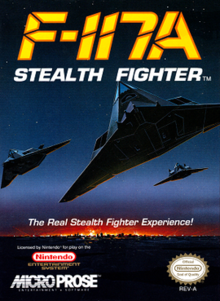
The Lockheed F-117 Nighthawk is a retired American single-seat, subsonic twin-engine stealth attack aircraft developed by Lockheed's secretive Skunk Works division and operated by the United States Air Force (USAF). It was the first operational aircraft to be designed with stealth technology.

A military aircraft is any fixed-wing or rotary-wing aircraft that is operated by a legal or insurrectionary military of any type. Military aircraft can be either combat or non-combat:

Stealth aircraft are designed to avoid detection using a variety of technologies that reduce reflection/emission of radar, infrared, visible light, radio frequency (RF) spectrum, and audio, all collectively known as stealth technology. The F-117 Nighthawk was the first operational aircraft explicitly designed around stealth technology. Other examples of stealth aircraft include the B-2 Spirit, the B-21 Raider, the F-22 Raptor, the F-35 Lightning II, the Chengdu J-20, and the Sukhoi Su-57.

The LTV A-7 Corsair II is an American carrier-capable subsonic light attack aircraft designed and manufactured by Ling-Temco-Vought (LTV).

Aerial supremacy is the degree to which a side in a conflict holds control of air power over opposing forces. There are levels of control of the air in aerial warfare. Control of the air is the aerial equivalent of command of the sea.

Suppression of Enemy Air Defenses (SEAD, pronounced ), also known in the United States as "Wild Weasel" and (initially) "Iron Hand" operations, are military actions to suppress enemy surface-based air defenses, including not only surface-to-air missiles (SAMs) and anti-aircraft artillery (AAA) but also interrelated systems such as early-warning radar and command, control and communication (C3) functions, while also marking other targets to be destroyed by an air strike. Suppression can be accomplished both by physically destroying the systems or by disrupting and deceiving them through electronic warfare. In modern warfare, SEAD missions can constitute as much as 30% of all sorties launched in the first week of combat and continue at a reduced rate through the rest of a campaign. One quarter of American combat sorties in recent conflicts have been SEAD missions. Despite generally being associated with aircraft, SEAD missions may be performed using any means, including through actions by ground forces.

F-19 Stealth Fighter is a combat flight simulator developed and released in 1988 and 1990 by MicroProse, featuring a fictional United States military aircraft. It is the 16-bit remake of the 8-bit game Project Stealth Fighter, which was released for the Commodore 64 in 1987. It was also ported to the NEC PC-9801 in Japan only, and the DOS version was re-released on Steam distribution platform in 2015.
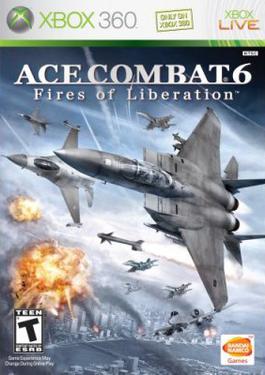
Ace Combat 6: Fires of Liberation is a 2007 arcade-style combat flight simulation video game developed by Project Aces and published by Namco Bandai Games exclusively for the Xbox 360. It is the seventh entry in the Ace Combat franchise, the first mainline game in the franchise to not see a release on a PlayStation platform as had been done with previous titles, and the first game in the franchise to include downloadable content. Like other Ace Combat games, Ace Combat 6 features standard gameplay from the series that mixes arcade flight with authentic flight simulation.

The 37th Training Wing is a unit of the United States Air Force assigned to the 2nd Air Force and the Air Education and Training Command. As the host unit to Lackland Air Force Base, Joint Base San Antonio, Texas, the 37th TRW is the predominant unit on the installation and is the largest training wing in the USAF. Known as the "Gateway to the Air Force", the 37th Training Wing's replaced the Lackland Training Center as the single basic military training for the USAF.

The 49th Wing is a remotely piloted vehicle wing of the United States Air Force. It is assigned to Nineteenth Air Force, Air Education and Training Command. It is stationed at Holloman Air Force Base, New Mexico. The wing has fought during the Korean War, Vietnam War, Operation Desert Storm and NATO-led Operation Allied Force over Kosovo.

The 415th Special Operations Squadron is a United States Air Force unit. It is assigned to the 58th Operations Group at Kirtland Air Force Base, New Mexico.

The 8th Fighter Squadron is an active United States Air Force squadron, assigned to the 54th Fighter Group Air Education and Training Command, stationed at Holloman Air Force Base, New Mexico. It currently operates the General Dynamics F-16 Fighting Falcon aircraft, conducting initial training, transition and instructor upgrades training. The squadron have a proud lineage of aircraft and assignments. The origin of the 8th Fighter Squadron can be traced back to 1940, and since then, the squadron has served in several war and peace time assignments across the globe.
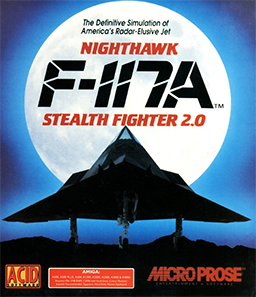
F-117A Nighthawk Stealth Fighter 2.0 is the 1991 remake of the 1988-1990 Cold War combat flight simulator video game F-19 Stealth Fighter by MicroProse, itself a remake of 1987's Project Stealth Fighter. The original PC version was updated with a corrected aircraft model once the Lockheed F-117 Nighthawk was declassified and with 256-color VGA graphics instead of the original's 16-color EGA, among other changes.
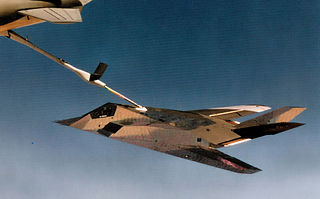
The 4450th Tactical Group is an inactive United States Air Force unit. It was headquartered at Nellis Air Force Base, Nevada, and operationally located at Tonopah Test Range Airport, Nevada. It was inactivated on 5 October 1989.

The 416th Fighter Squadron is an inactive United States Air Force unit. Its last assignment was with the 49th Fighter Wing at Holloman Air Force Base, New Mexico. The squadron was inactivated on 1 July 1993.
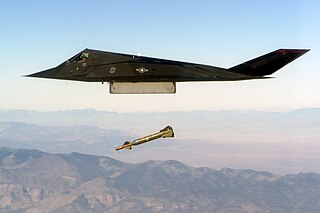
The 417th Test and Evaluation Squadron is an active United States Air Force unit, assigned to the 753rd Test and Evaluation Group and stationed at Edwards Air Force Base, California. Its previous assignment was with the USAF Weapons School at Holloman Air Force Base, New Mexico, where it was inactivated on 14 September 2006.

Operation Desert Storm, the combat phase of the Gulf War, began with an extensive aerial bombing campaign by the air forces of the coalition against targets in Iraq and Iraqi-occupied Kuwait from 17 January 1991 to 23 February 1991. Spearheaded by the United States, the coalition flew over 100,000 sorties, dropping 88,500 tons of bombs, widely destroying military and civilian infrastructure. The air campaign was commanded by United States Air Force (USAF) Lieutenant General Chuck Horner, who briefly served as Commander-in-Chief—Forward of U.S. Central Command while General Norman Schwarzkopf was still in the United States. The British air commanders were Air Chief Marshal Andrew Wilson and Air Vice-Marshal Bill Wratten. The air campaign had largely finished by 23 February 1991 with the beginning of the coalition ground offensive into Kuwait.
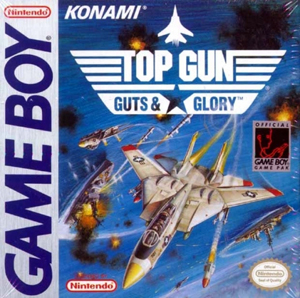
Top Gun: Guts and Glory is a modern jet flight simulation that was released in 1993 for the original Nintendo Game Boy in Europe and North America.
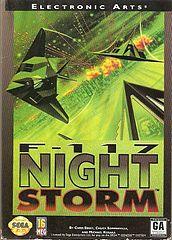
F-117 Night Storm is a Sega Mega Drive-exclusive video game that was released in 1993 by Electronic Arts.

On 27 March 1999, during the NATO bombing of Yugoslavia, a Yugoslav Army unit shot down an F-117 Nighthawk stealth aircraft of the United States Air Force by firing a S-125 Neva/Pechora surface-to-air missile. It was the first ever shootdown of a stealth technology airplane. The pilot ejected safely and was rescued by U.S. Air Force Pararescuemen conducting search and rescue.
